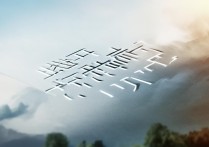环境保护英语作文
Environmental Protection: Our Collective Responsibility
Life on Earth thrives within an intricate web of natural systems – clean air, fresh water cycles, fertile soil, diverse ecosystems, and stable climate patterns. Yet human activities over centuries have increasingly disrupted this fragile equilibrium, leading to severe environmental degradation that threatens all living beings. Addressing this crisis demands profound changes across global society towards greater sustainability.
Key Challenges Facing Our Planet
| Threat | Primary Sources | Consequences | Examples |
|---|---|---|---|
| Pollution (Air/Water/Land) | Industrial emissions, vehicle exhaust; agricultural runoff with fertilizers/pesticides; plastic waste dumping; improper hazardous waste disposal | Respiratory diseases & acid rain; ocean dead zones & contaminated drinking sources; soil toxicity reducing crop yields; microplastics entering food chains | Beijing smog alerts; eutrophication in Lake Erie; Great Pacific Garbage Patch |
| Deforestation & Habitat Loss | Logging for timber/agriculture expansion; urban sprawl clearing land | Biodiversity collapse (~1 million species face extinction risk); disrupted watershed management causing floods/droughts; carbon storage reduction exacerbating climate change | Amazon rainforest clearance rate > 20% already destroyed since 1970s |
| Climate Change Acceleration | Burning fossil fuels (coal/oil/gas); intensive livestock farming producing methane | Rising sea levels swallowing coastal cities; extreme weather events increasing frequency/intensity; coral reef bleaching mortality events spreading globally | IPCC reports >90% likelihood temperatures exceed +1.5°C threshold by mid-century |
| Resource Depletion | Overfishing beyond sustainable yields; groundwater extraction surpassing recharge rates | Collapse of commercial fisheries like Atlantic cod stocks; sinking aquifers forcing Indian farmers to abandon lands | World Bank estimates 40% global grain harvest dependent on unsustainable groundwater use |
| Waste Accumulation | Single-use culture creating disposable items littering landscapes | Landfill space scarcity while toxic leachates poison underground reservoirs | Global plastic production nearing 400 million tons annually – only ~9% effectively recycled |
Solutions Through Innovation and Action
Renewable Energy Transition
- Shift focus: Invest massively in solar photovoltaics, wind turbines, geothermal plants, hydropower (where ecologically sound), replacing coal plants which contribute 30% of global CO₂ emissions. Germany’s Energiewende policy demonstrates grid stability with >40% renewable electricity share achieved through phased nuclear retirement coupled with aggressive subsidy programs for green tech deployment.
- Incentivize adoption: Governments must implement feed-in tariffs guaranteeing premium prices for households generating solar power surplus fed back into national grids. Electric vehicle mandates alongside expanding charging infrastructure networks accelerate transport decarbonization – Norway achieved electric car market penetration exceeding 80% via tax exemptions and toll road waivers.
Sustainable Agriculture Practices
- Agroecology models: Intercropping beans alongside maize fixes nitrogen naturally while boosting yields by 30%, eliminating synthetic fertilizer needs. Crop rotation prevents soil erosion seen historically across US Midwest dust bowl regions during poor land management periods. Precision irrigation drip systems cut water consumption versus flood methods by upwards of 60%.
- Reduce meat consumption: Livestock accounts for nearly 15% direct greenhouse gas output globally. Promoting plant-rich diets significantly lowers individual carbon footprints – a vegan diet saves ~1 ton CO₂ equivalent annually compared to standard meat-heavy Western diets according to Oxford University research.
Waste Management Revolution
- Circular economy framework: Design products modularly enabling easy repair/recycling (e.g., Fairphone smartphones). Deposit return schemes dramatically increase beverage container recovery rates – Sweden recycles over 99% of its aluminum cans through such policies. Composting organic waste transforms food scraps into nutrient-rich soil amendment closing nutrient loops sustainably.
- Producer responsibility legislation: Hold manufacturers financially accountable for end-of-life product disposal costs forces lighter packaging designs and material selection favoring recyclability. The EU’s Single-Use Plastics Directive banning items like straws/cutlery embodies this principle effectively when enforced rigorously.
Biodiversity Conservation Efforts
- Protected areas expansion: Designate interconnected wildlife corridors spanning sufficient scale allowing genetic exchange between fragmented populations. Costa Rica reversed deforestation trends protecting forests covering over a quarter of its territory today while supporting ecotourism generating $4 billion yearly revenue streams demonstrating economic viability beyond traditional extractive industries.
- Combat illegal trade: Strengthen anti-poaching patrols utilizing drone surveillance technology alongside stringent international penalties under CITES treaties targeting traffickers supplying black markets valued at hundreds of millions annually for endangered species parts. Elephant populations showed regional stabilization following Ivory Coast’s 2017 domestic ban disrupting supply chains significantly.
Individual Empowerment Matters Too
Everyday choices aggregate profoundly: carrying reusable bags avoiding trillions of single-use plastic pieces annually; selecting energy-efficient appliances certified by ENERGY STAR labels reducing home electricity bills substantially; participating in community clean-up drives removing tons of litter polluting riverbanks seasonally. small actions multiplied across billions create systemic shift momentum essential complementing top-down regulatory approaches. Student movements demanding climate action curriculum integration highlight moral imperative engaging youth voices amplifying urgency through platforms like Fridays for Future strikes mobilizing millions worldwide.
Related Questions & Answers
Q1: How does plastic pollution specifically harm marine ecosystems?
Marine organisms frequently mistake microplastic particles (<5mm diameter) for plankton food sources due to similar size ranges. Studies reveal sea turtles ingest these fragments causing intestinal blockages leading to starvation deaths. Toxic additives like BPA leach into surrounding waters during degradation processes bioaccumulating up food web tiers until reaching apex predators including humans consuming seafood contaminated with concentrated pollutants at dangerous levels exceeding safety thresholds established by health agencies globally. Ghost nets abandoned fishing gear continues entangling whales dolphins seals causing drowning fatalities slowly estimated killing tens of thousands annually according NOAA reports.
Q2: What are effective strategies individuals can adopt daily to mitigate personal carbon footprints?
Practical steps include:
- Opting walkable/bikeable commutes whenever feasible replacing short car trips – average driver creates ~2.6 metric tons CO₂ yearly versus negligible emissions cycling equivalent distances.
- Reducing air travel drastically – returning transatlantic flight produces roughly equal emissions entire year driving conventional vehicle locally instead. Teleconferencing alternatives exist widely now making unnecessary most business flights historically taken habitually.
- Switching utility providers offering green energy options sourced entirely renewable generation facilities verified via certification schemes like Renewable Energy Guarantee of Origin certificates ensuring claim validity independently audited third parties verify claims made accurately reflect actual generation mix purchased consumer funds support thus accelerating industry growth scaling clean capacity faster displacing dirtier alternatives progressively over time.
- Adopting plant-forward diets minimizing red meat consumption particularly beef whose production generates disproportionately high emissions per calorie returned protein compared poultry legumes whole grains providing healthier nutritional profiles simultaneously lowering disease risks associated excessive animal fat intake medical literature consistently documents conclusively linking processed meat consumption colorectal cancer development prominently among other adverse health outcomes documented extensively meta-analyses comprehensive systematic reviews published peer reviewed journals regularly updated guidelines reflect current scientific consensus recommendations public health officials endorse globally universally accepted validated evidence based medicine principles followed clinical practice guidelines formulated accordingly thereupon informing dietary advisory bodies structuring national recommendations subsequently disseminated population wide effectuating gradual behavioral shifts culturally acceptable norms evolving consequently mainstream acceptance attained organically without coercion mandatory intervention necessary thankfully hither
版权声明:本文由 数字独教育 发布,如需转载请注明出处。














 冀ICP备2021017634号-12
冀ICP备2021017634号-12
 冀公网安备13062802000114号
冀公网安备13062802000114号